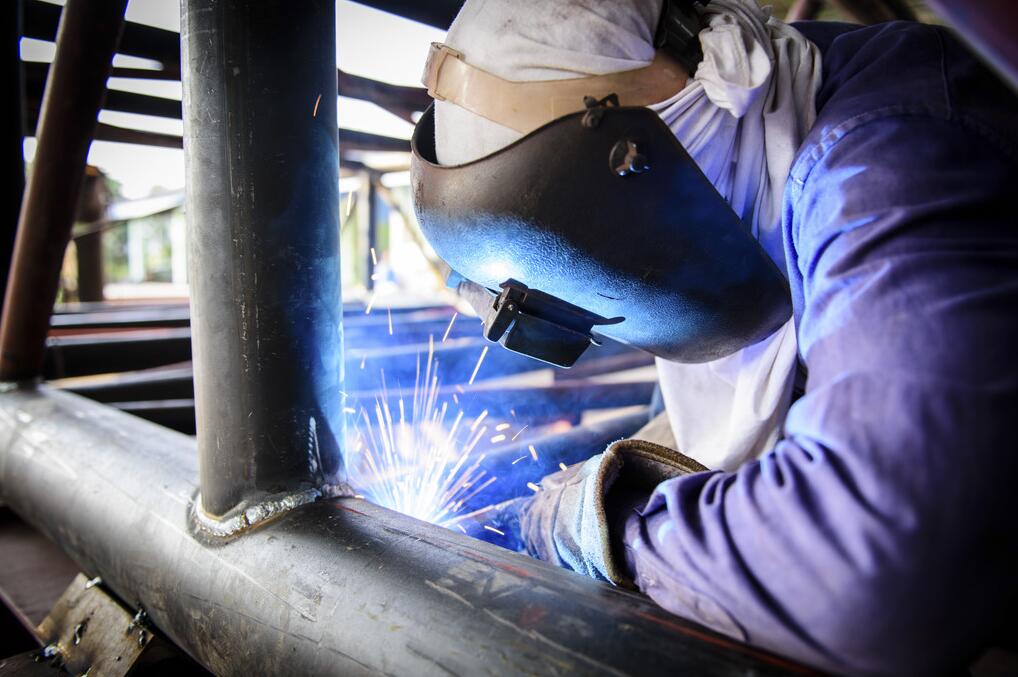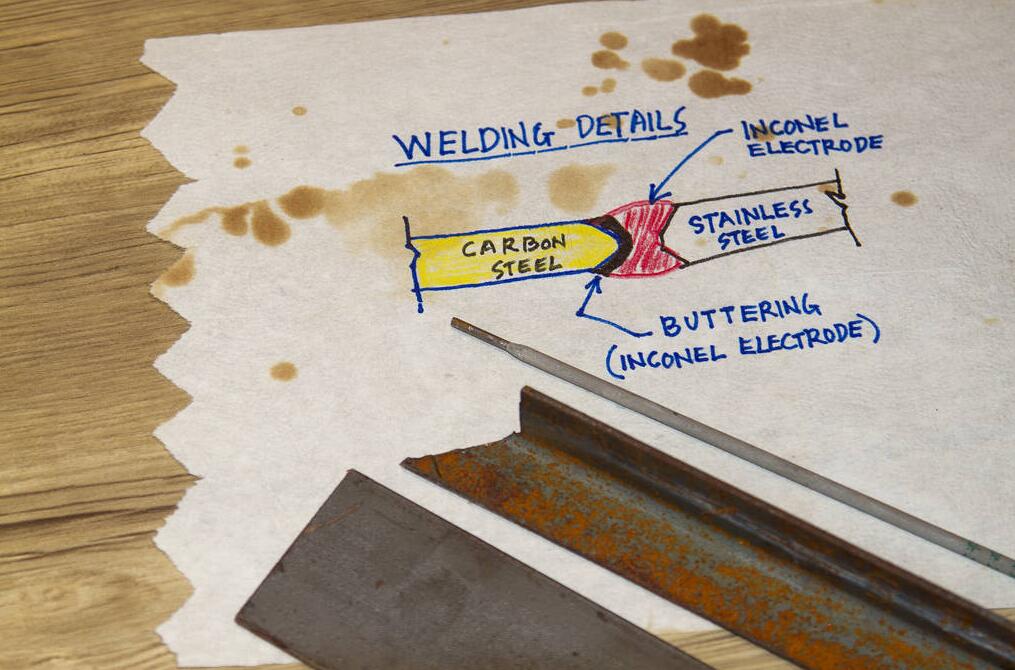How to Weld High Carbon Steel?
 Aug 11, 2023|
Aug 11, 2023| View:321
View:321High carbon steel refers to carbon steel with w (C) higher than 0.6%, which has a greater tendency to harden than medium carbon steel and forms high carbon martensite,
which is more sensitive to the formation of cold cracks. At the same time, the martensitic structure formed in the welding heat affected zone has a hard and brittle performance,
leading to a significant decrease in the plasticity and toughness of the joint. Therefore, the weldability of high carbon steel is quite poor, and special welding processes must be
adopted to ensure the performance of the joint. Therefore, in welded structures, it is generally rarely used.
High carbon steel is mainly used for machine components that require high hardness and wear resistance, such as shafts, large gears, and couplings. In order to save steel and
simplify processing technology, these machine components are often combined with welded structures. In the manufacturing of heavy machinery, welding problems of high carbon
steel components can also be encountered. When formulating the welding process for high carbon steel weldments, a comprehensive analysis should be conducted on various
welding defects that may occur, and corresponding welding process measures should be taken.

1. Weldability of High Carbon Steel
1.1 Welding method
High carbon steel is mainly used for structures with high hardness and wear resistance, so the main welding methods are electrode arc welding, brazing, and submerged arc welding.
1.2 Welding materials
High carbon steel welding generally does not require strength between the joint and the base material. Low hydrogen type welding rods with strong desulfurization ability, low diffusion
hydrogen content of deposited metal, and good toughness are generally selected for arc welding with welding rods. When requiring the strength of the weld metal and base metal,
corresponding levels of low hydrogen type welding rods should be selected; When the strength of the weld metal and the base metal is not required, low hydrogen type welding rods
with a strength level lower than the base metal should be selected. It is important to remember not to choose welding rods with a strength level higher than the base metal. If preheating
is not allowed for the base material during welding, in order to prevent cold cracking in the heat affected zone, austenitic stainless steel welding rods can be selected to obtain austenitic
structures with good plasticity and strong crack resistance.
1.3 Preparation of bevels
In order to limit the mass fraction of carbon in the weld metal, the fusion ratio should be reduced. Therefore, U-shaped or V-shaped grooves are generally used during welding, and
attention should be paid to cleaning the grooves and any oil stains, rust, etc. within a range of 20mm on both sides of the groove.
1.4 Preheating
When using structural steel welding rods for welding, preheating must be carried out before welding, and the preheating temperature should be controlled between 250 ℃ and 350 ℃.
1.5 Interlayer treatment
When welding multiple layers and passes, the first pass is welded with a small diameter electrode and a small current. Generally, the workpiece is placed in a semi vertical welding position
or the welding rod is used to swing horizontally, so that the entire heat affected zone of the base material is heated in a short period of time, in order to achieve preheating and insulation effects.
1.6 Post weld heat treatment
Immediately after welding, the workpiece is placed in a heating furnace and insulated at 650 ℃ for stress relief annealing.
2. Welding Defects and Preventive Measures of High Carbon Steel
2.1 Prevention measures for hot cracks:
1) Control the chemical composition of the weld seam, strictly control the content of sulfur and phosphorus, and appropriately increase the manganese content to improve the weld seam structure and reduce segregation.
2) Control the cross-sectional shape of the weld seam, with a slightly larger aspect ratio to avoid segregation at the center of the weld seam.
3) For welding components with high rigidity, appropriate welding parameters, welding sequence, and direction should be selected.
4) If necessary, preheating and slow cooling measures should be taken to prevent the occurrence of hot cracks.
5) Increase the alkalinity of the welding rod or flux to reduce the impurity content in the weld and improve the degree of segregation.
2.2 Prevention measures for cold cracks:
1) Preheating before welding and slow cooling after welding can not only reduce the hardness and brittleness of the heat affected zone, but also accelerate the outward diffusion of hydrogen in the weld seam.
2) Select appropriate welding measures. 3) Adopting appropriate assembly and welding sequences to reduce the restraint stress of welded joints and improve the stress state of welded components.
4) Select suitable welding materials, dry the welding rod and flux before welding, and ensure that they are readily available for use.
5) Before welding, water, rust, and other dirt on the basic metal surface around the groove should be carefully removed to reduce the content of diffused hydrogen in the weld.
6) Before welding, hydrogen removal treatment should be carried out immediately to allow hydrogen to fully escape from the welded joint.
7) After welding, stress relieving annealing treatment should be carried out immediately to promote the outward diffusion of hydrogen in the weld seam.
Due to its high carbon content, high hardenability, and poor weldability, high carbon carbon steel is prone to produce high carbon martensite structure and welding cracks during welding. Therefore, when welding
high carbon steel, it is necessary to choose a reasonable welding process and take corresponding measures in a timely manner to reduce the occurrence of welding cracks and improve the performance of welding joints.







